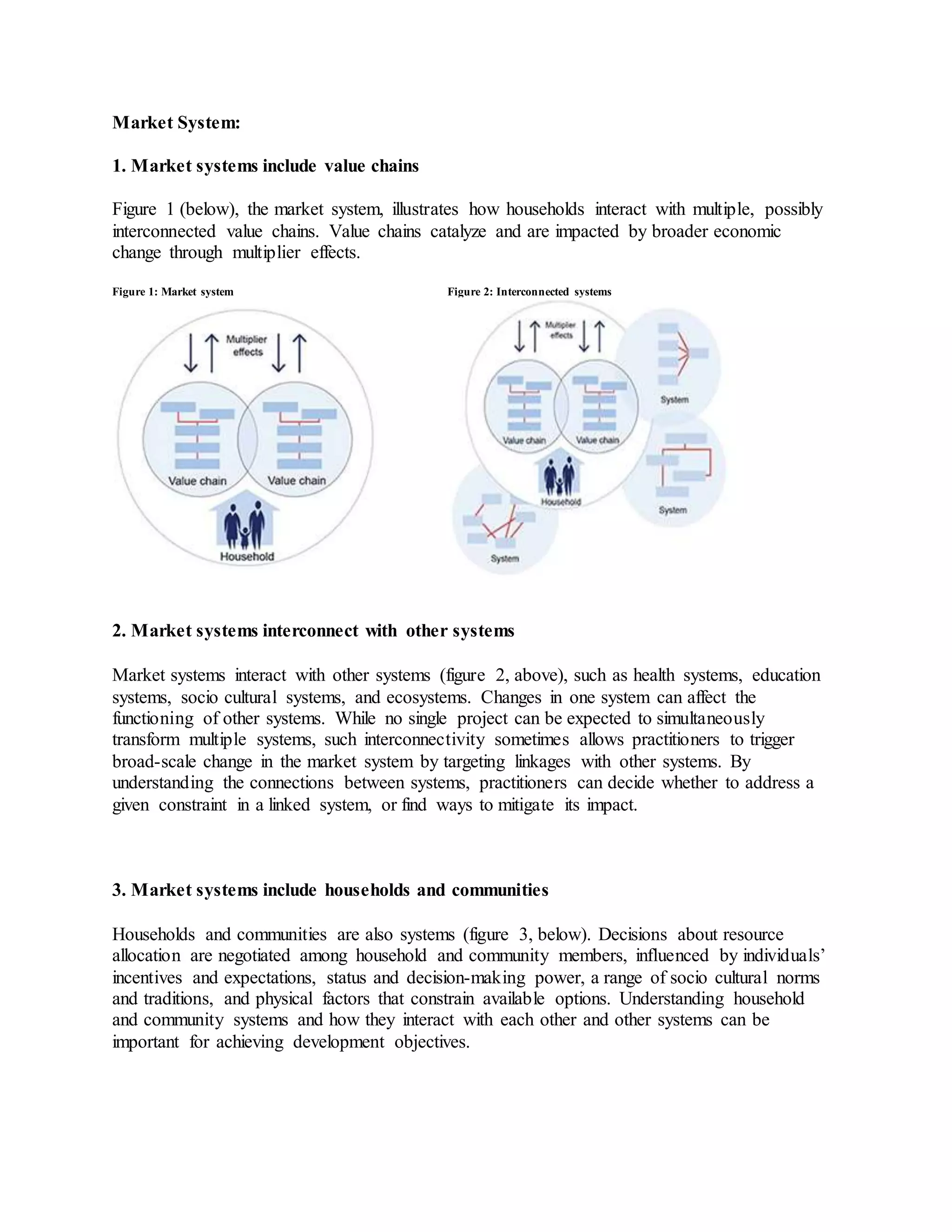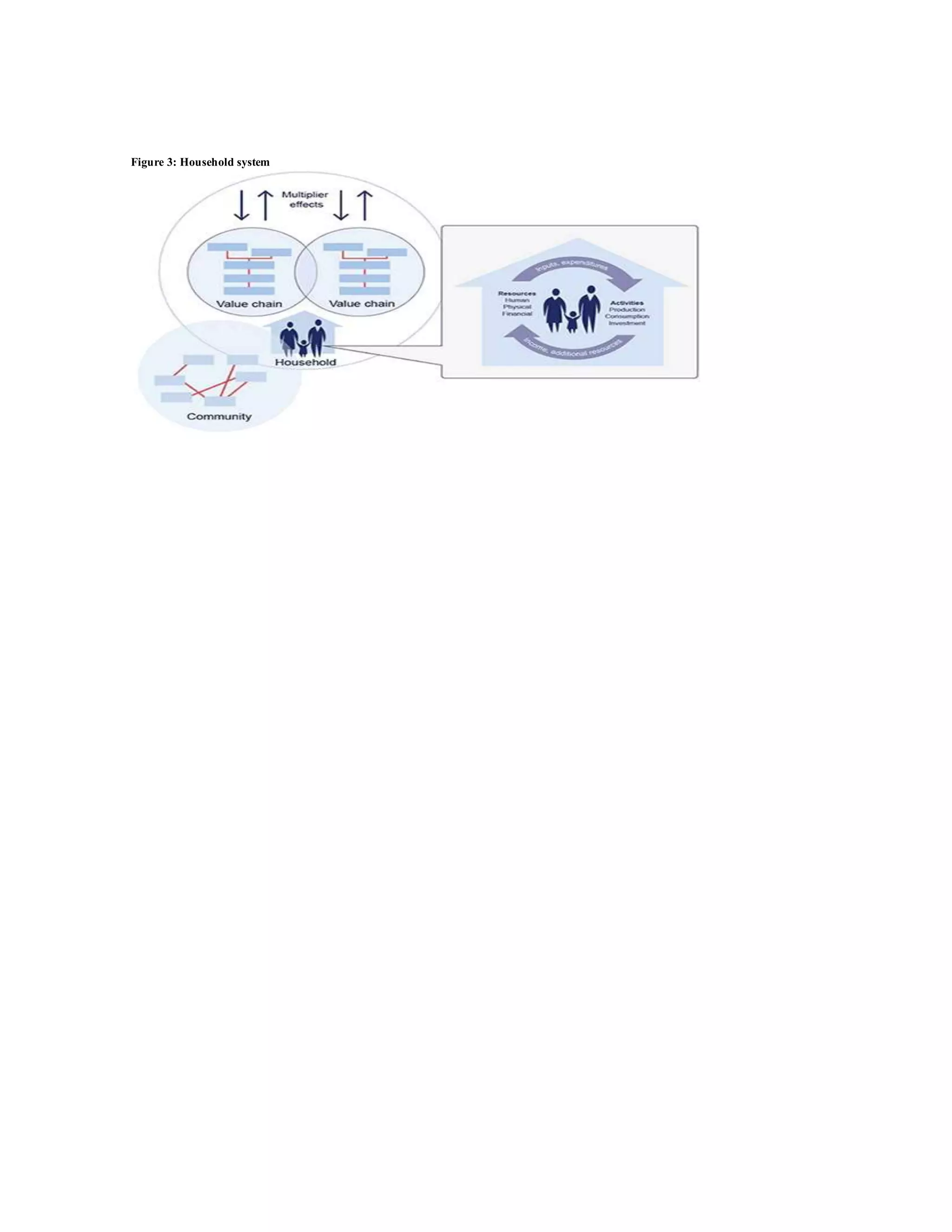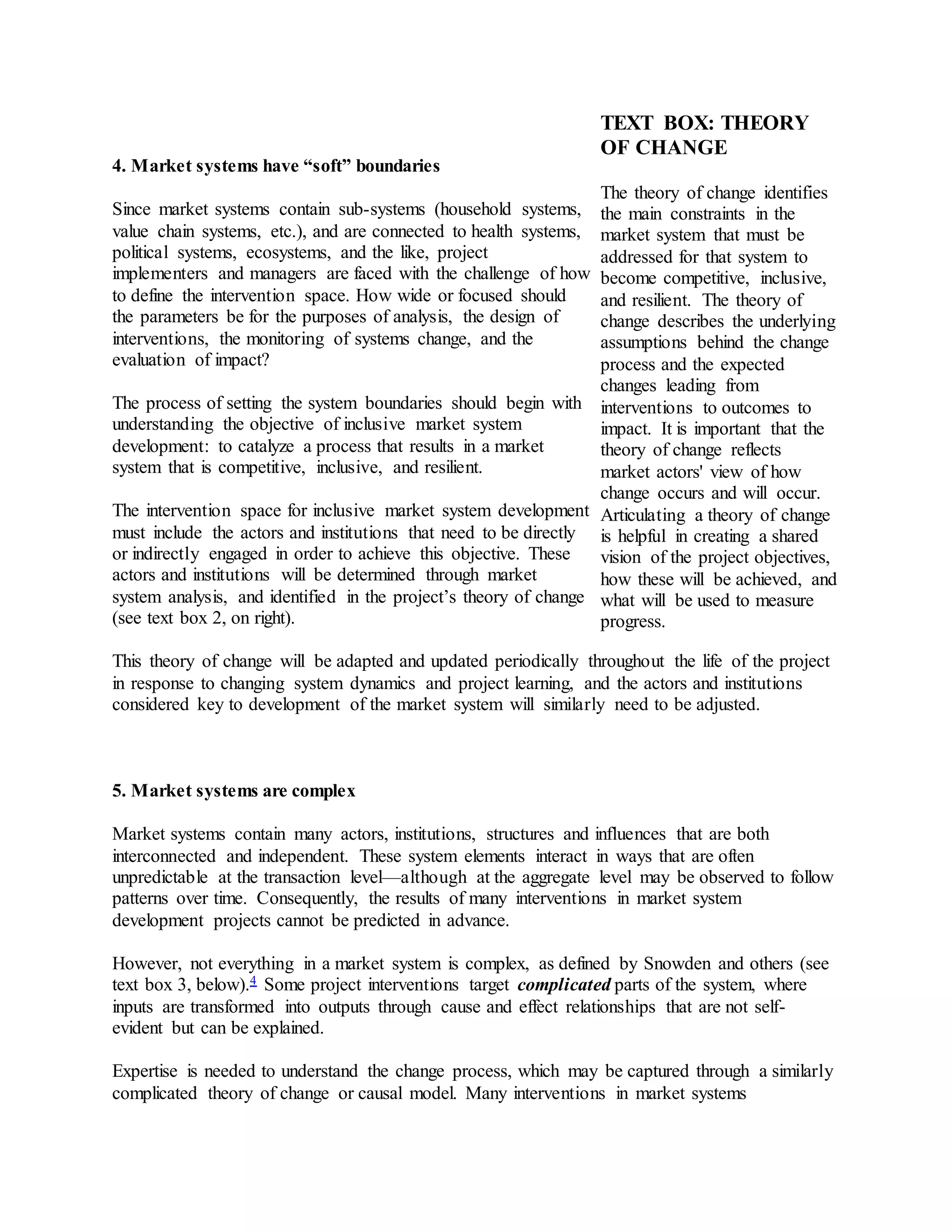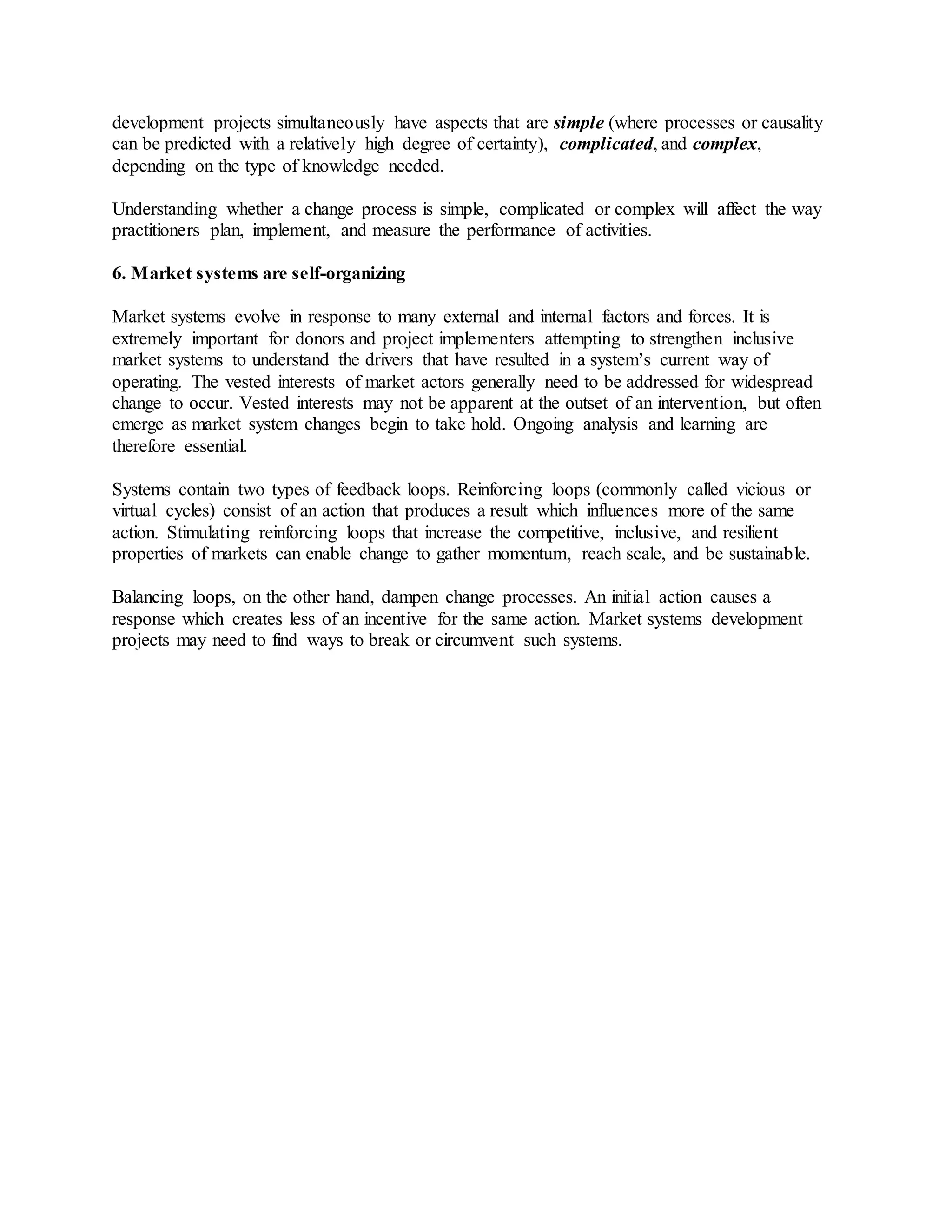1. Market systems include interconnected value chains that impact broader economic changes through multiplier effects. They interact with other systems like health, education, socio-cultural, and ecosystems so that changes in one system can affect others.
2. Households and communities are also systems that make decisions influenced by incentives, expectations, norms, and constraints. Understanding how these systems interact within markets can help achieve development goals.
3. Market systems have "soft" boundaries as they contain sub-systems and connect to other systems. The intervention space must engage actors needed to make the market competitive, inclusive and resilient based on market analysis and a theory of change.



